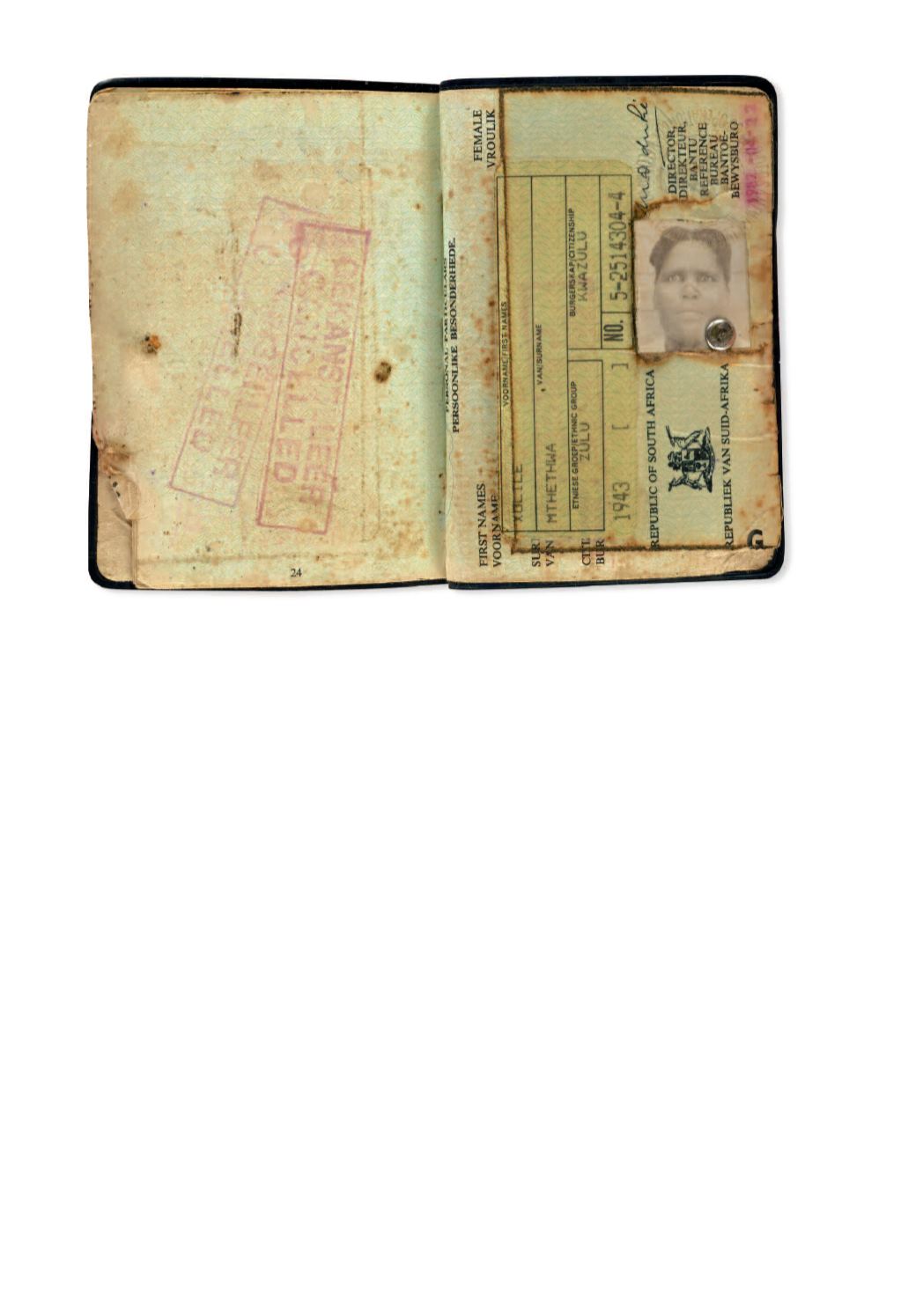

127
●
(AFRICA.) APARTHEID.
Group of four “Bewysboek”/”Reference”
book.
About the size of a cigarette pack; between 25 and 30 pages; photographic identifi-
cation with tribal group (Zulu), pages with cancelation stamps etc.
Capetown, South Africa, 1960’s to 1970’s
[600/900]
RARE RELICS OF AN EXTRAORDINARY SYSTEM THAT FORCED ITS NATIVE POPULATION TO
CARRY PASSPORTS TO TRAVEL IN THEIR OWN COUNTRY
.
These little “Bewysboeks” were
mandatory for all. If one was caught outside one’s township at night for example, they would immedi-
ately be arrested. It boggles the mind to consider the total control that was imposed on South Africa’s
native population, not to mention the exploitation of their natural resources.
128
●
(AFRICA.) APARTHEID.
WAGKAMER BLANKES ALLEENLIK * WAIT-
ING ROOM NON-WHITES.
Two rectangular Apartheid Signs, made from some kind
of plastic or Bakelite; one in Afrikaans and the other in English; 5 x 16 inches, black paint
on an off-white surface; some rubbing and general wear. Tastefully framed with two “win-
dows” one sign mounted above the other.
Durban, [public area], circa 1950’s
[1,500/2,500]
A VERY RARE PAIR OF APARTHEID SIGNS FROM A PUBLIC PLACE
,
POSSIBLY A BUS STATION IN
SOUTH AFRICA
.
The system of “apartheid,” literally “apartness,” or “aparthood,” was first formally
and forcibly imposed on South Africa’s indigenous peoples in 1948. This harsh segregation with all of
its race laws continued until 1994, when the first democratic elections were held. Under Apartheid, the
native Bantu, Zulu and other tribal groups of people were restricted in where they could live, work
and play. Signs like this, once common all over South Africa, are very nearly impossible to find. With
the end of the hateful system, an attempt was made to gather up and destroy all remnants of it. This
sign and the other Apartheid material being offered here today were saved by a collector. In the twenty
years that we have conducted this sale, this is only the second such sign we have handled. The first
came from the same source.
127









